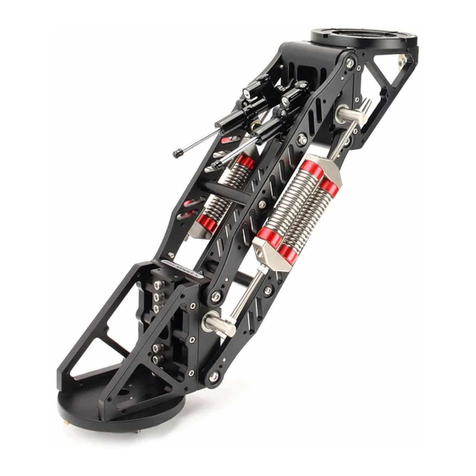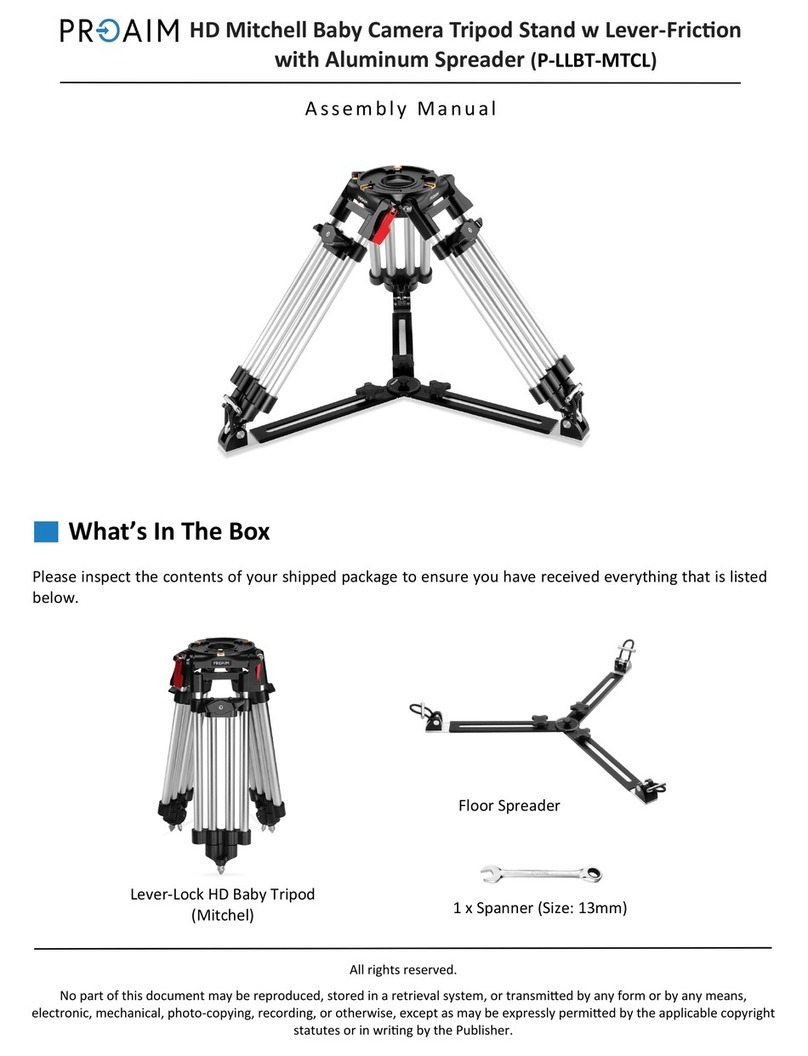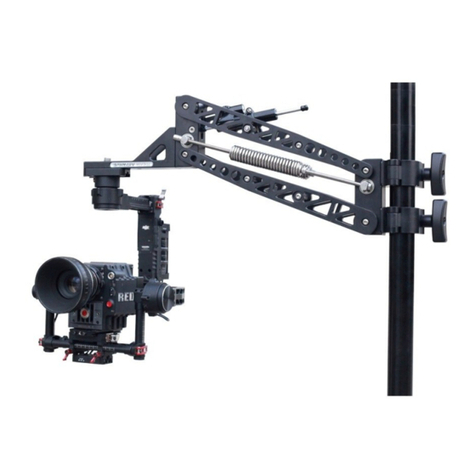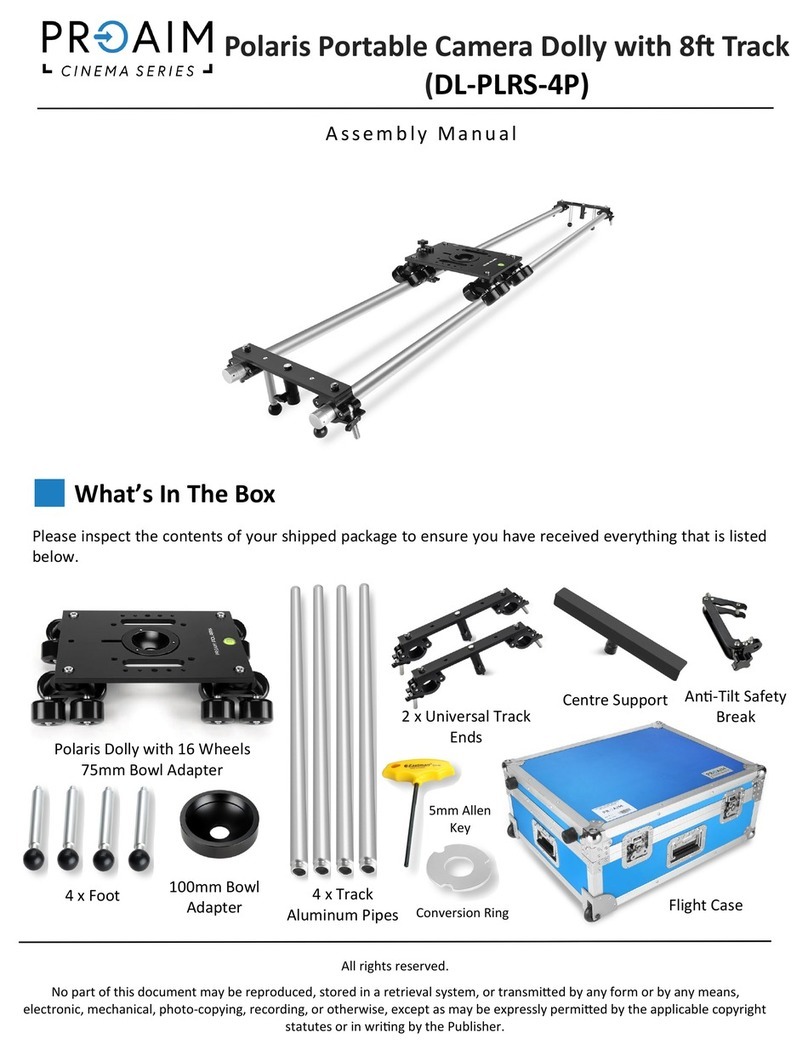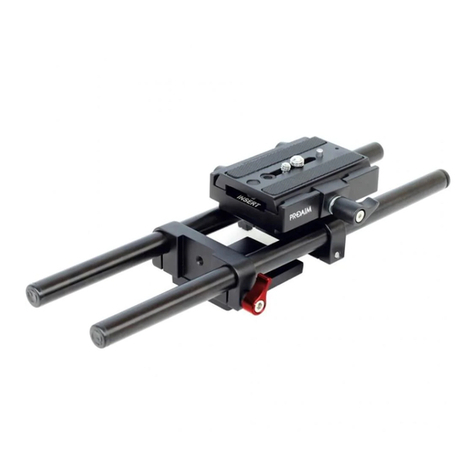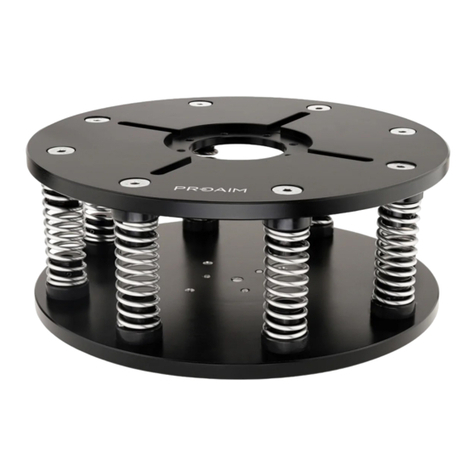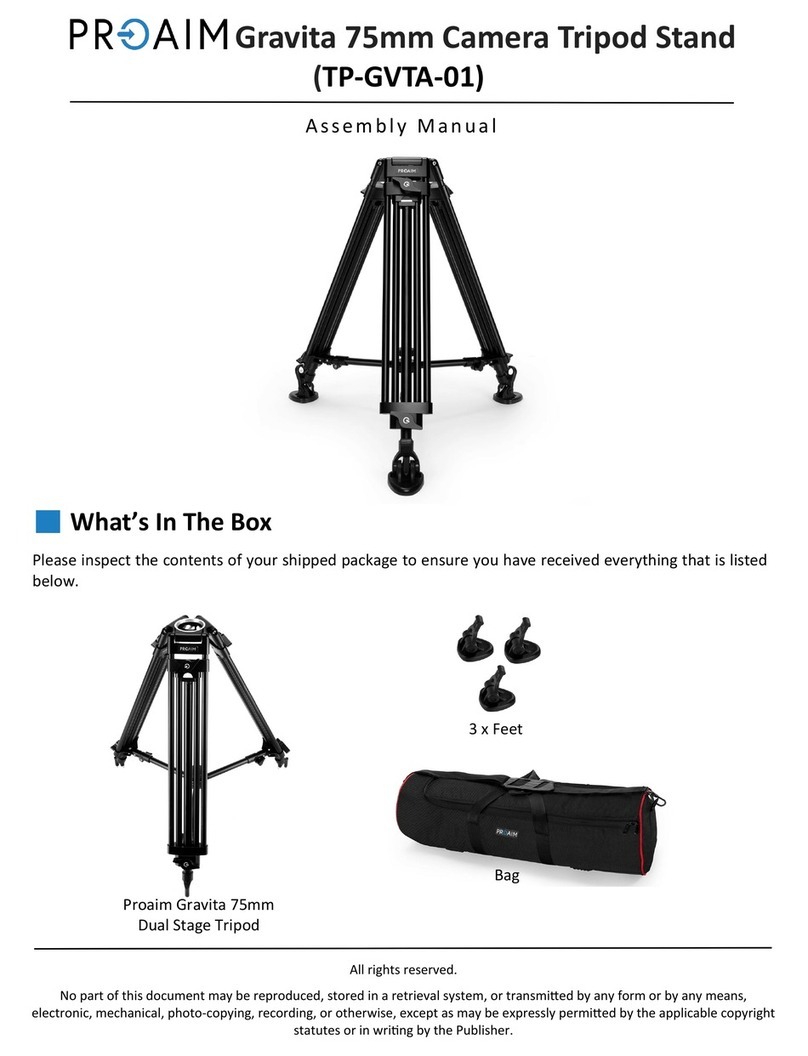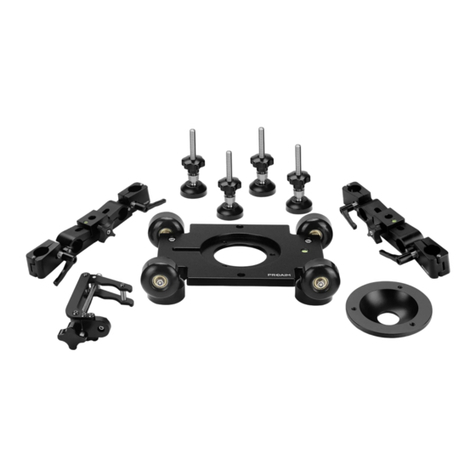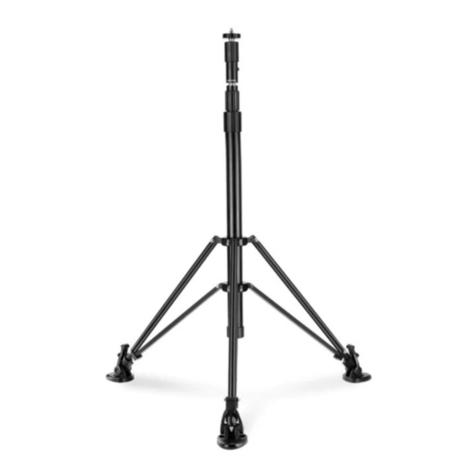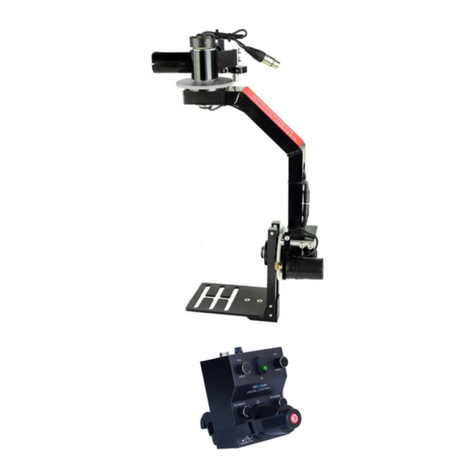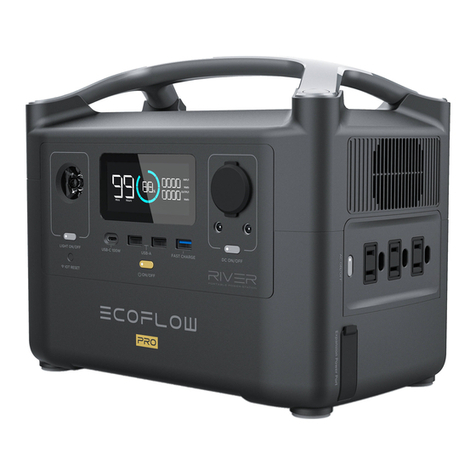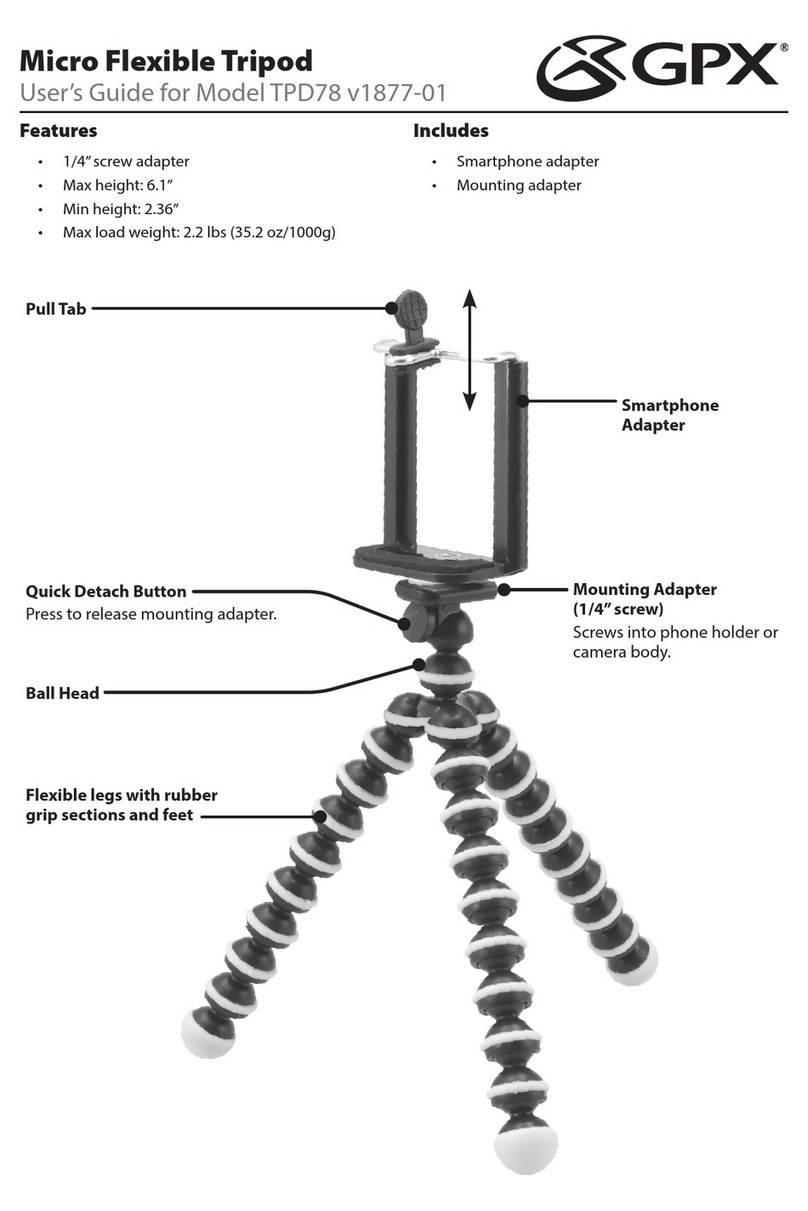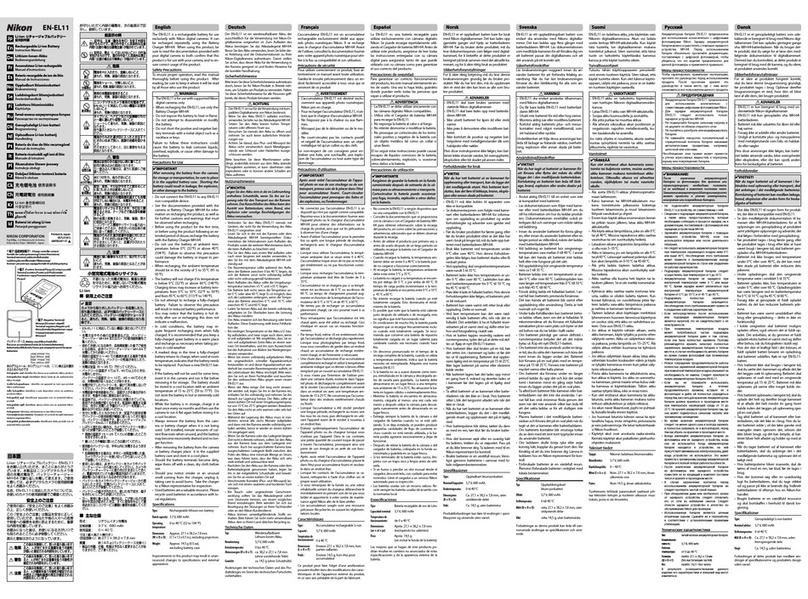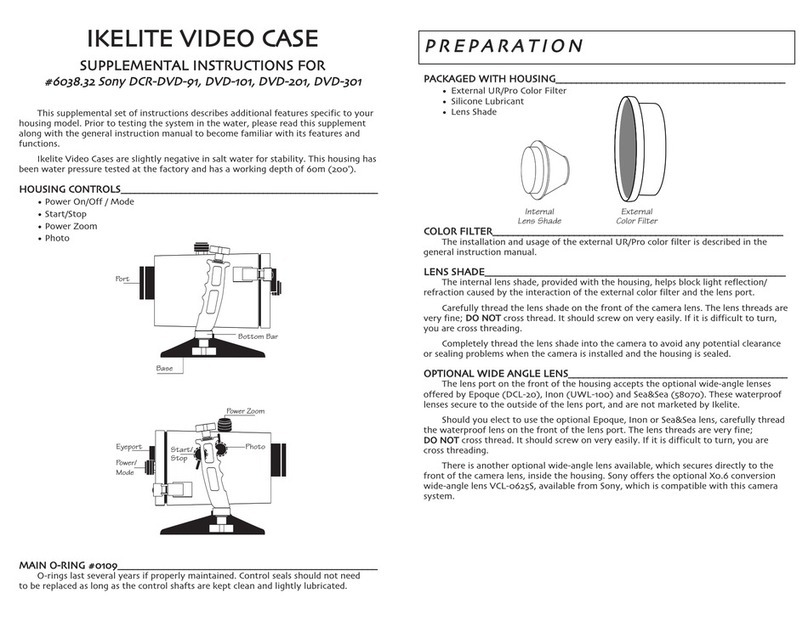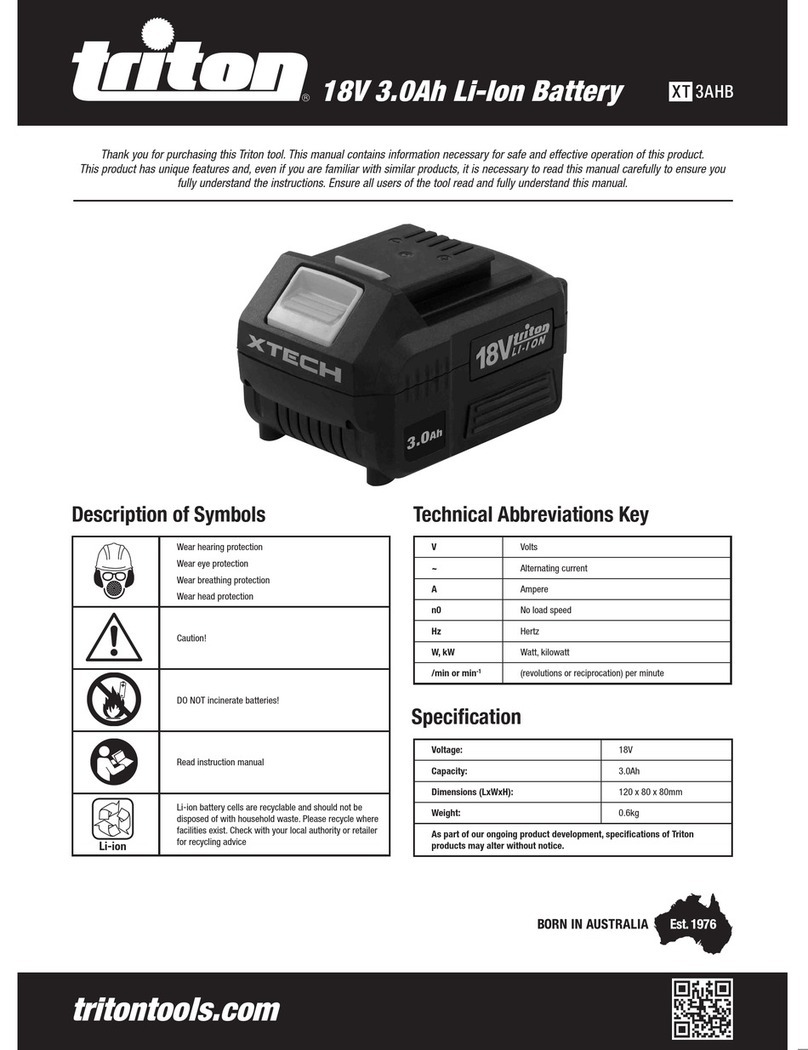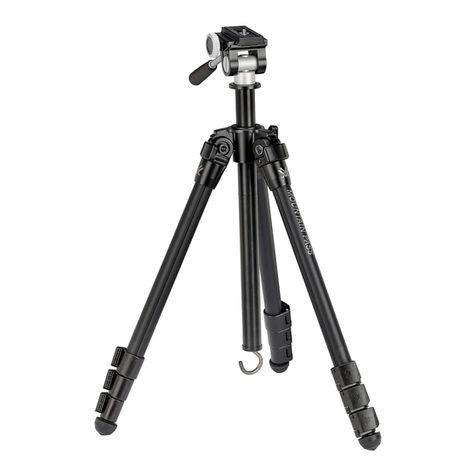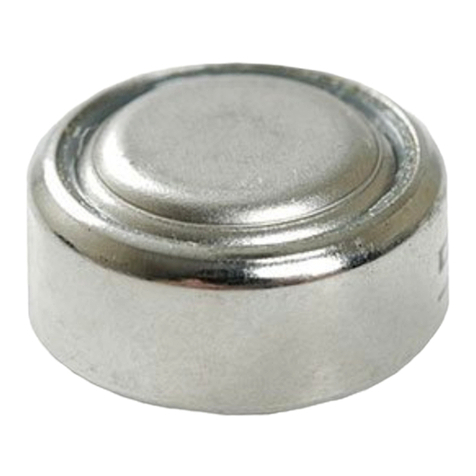8
Aach & secure your camera on camera
plaorm of Head with the help of
provided chucknut.
If the Joysck Control is opposite; undo the connectors of motors, rotate 180° and re-install.
Funconing of Joysck Controller
The Joysck is a 2-Axis Variable Speed Servo Controller. The further you move in one direcon,
the faster the output to that motor. This will be a lile tricky at rst, but lile pracce will
improve your success. The joysck may be operated in a handheld posion or from a at
surface such as a tabletop, or aached to the boom arm of Jib.
NOTE: Aer plugging the power cord into a proper outlet, press ‘Power On’. The LED light on the
control box should illuminate and the head may jump slightly on start up or shut down. This is
normal. This can be controlled by Dead Spot. Adjust the Joysck to ensure correct movement of
head. It may be necessary to reconnect to the motors, if required.
Speed
This is the power control knob. Turning to the right will be full power and back to the le will
decrease the available power to both pan and lt operaon. The advantage of power control is
to be able to limit power when only slow accurate movements are needed. With the power
control at half power (approx. 8 volts max. output) the full range of moon on the joysck will
be between 0 and 8 volts making ner adjustments possible. The power control will be usable
between approximately 4 volts to 12 volts.
Linear or Logarithmic Taper Joysck Control
All joyscks are linear, meaning that each degree of movement of the sck correlates to the
output. On the 12 volt Pan Tilt Head, half deecon of joysck means approximately 6 volts is
sent to the motors. But with the advent of Digital, we can now control the taper of joysck,
making in Logarithmic as well. Logarithmic taper means that the rst joysck movement only
sends a small amount of power to motors and the last of the deecon will send more power
per degree of deecon. On Logarithmic taper, 1/3 of joysck deecon might yield 2 volts
output, the next 1/3 will yield 4 volts output and the last 1/3 yields 6 volts for a maximum again
of 12 volts. This mode gives the operator ne slow movements yet retain the ability to go to
maximum speed, if necessary.












